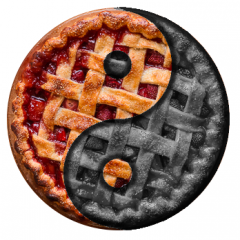Theory of Operation of Electrode Gas Flame Detection
If you're working on a gas stove where the burners keep clicking even after the flame is established, you may be tempted to throw a new spark module at it and hope for the best. But you would probably be disappointed. Let's start the troubleshooting process with a fundamental understanding of how the spark module is supposed to detect that the burner has established a flame:
Come with me now on a wild romp through the theory of operation of electrode gas flame detection...
If you look closely at a finger of burner flame you will see that it is clearly made up of three separate elements: 1. Inner fuel rich cone 2. Ionized blue outer cone with current carrying capabilities and 3. Outer air rich mantle. When gas combined with air; burned energy is released in the form of heat and light. When the gas / air mixture is controlled, the outer blue cone will actually carry electrical current similar to a wire.
If we place a metal probe into this “Ionized Plume” and apply a voltage between it and the burner, current will flow. An important characteristic of a burner/flame/electrode assembly is its ability to mainly pass current in one direction. It behaves as a one way valve or rectifier.
Flame Rectification systems make use of this directional characteristic when detecting a good flame to distinguish it from leakage currents that can arise due to moisture contamination, soiled igniter tip, poorly grounded burner spreader ring / burner head, cracked igniter insulation or poor house ground.
An AC voltage is applied to the electrode from the spark module and the resultant current flow which is greater in one direction than the other, is electronically detected. This current is very small, about one microamp (one millionth of an amp).
The minimum recommended flame current measured under all likely conditions in an installation should be 1.0 microamps for re-igniters. When a burner flame is present the Ionized outer cone will be producing a small DC current. This current is known as Flame Current. The flame current has to be at a certain level to allow voltage from the spark module to flow efficiently.
The accurate placing of the electrode in the flame is important. This igniter tip needs to be perfectly located in the ionized outer blue cone to effectively send and then detect current flow.
To break it down further, the spark module acts as a simple capacitor. It saves voltage like a sponge until it can hold no more. It will save and release this voltage approximately 3 times per second. When the voltage is released it follows the spark wire until reaches the spark electrode tip. The built up voltage wants to leave the tip and move to the point of least resistance. In a healthy situation this will be the burner spreader ring. From the burner spreader ring the voltage flow will pass through the burner head, burner tube, chassis and to ground. An interruption of this current path will cause the spark system to misbehave, such as with the continuous clicking problem.
Source: G.E. ZGU36L6H4SS Cooktop
-
.png) 2
2







0 Comments
Recommended Comments
There are no comments to display.